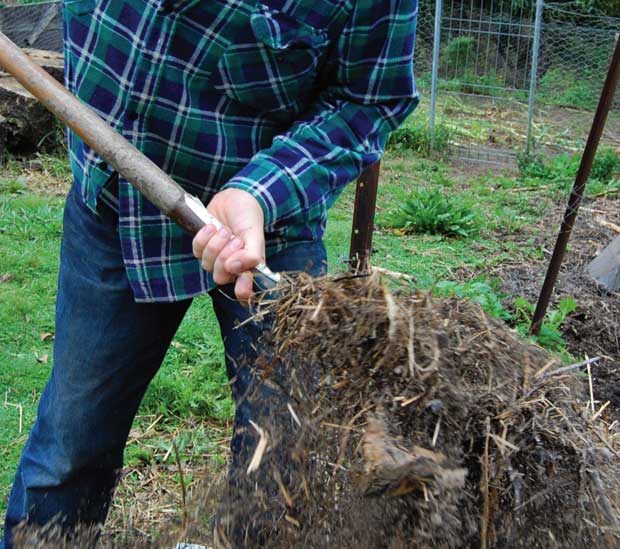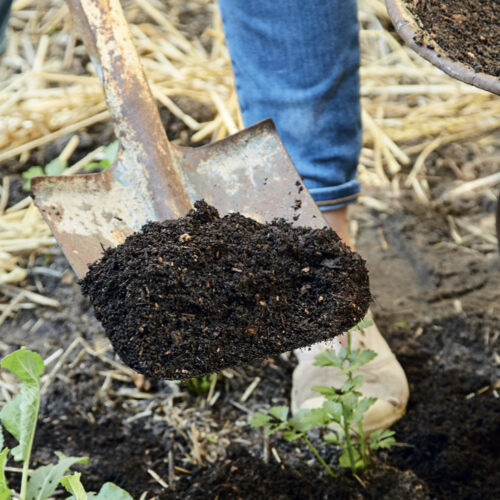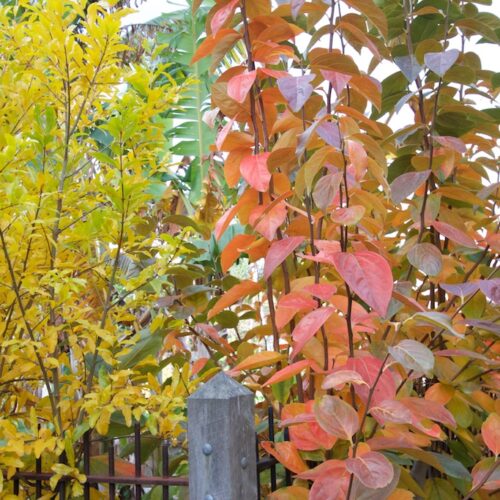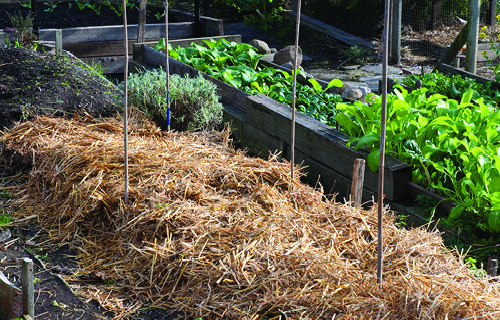COMPOST: The 12 Keys
2011-11-30T02:56:28+11:00
PHIL DUDMAN answers essential questions on making compost.
1 What can I put in my organic compost?
You can add just about anything that was once living. That includes animal manure, vegetable scraps, weeds, grass clippings, paper, cardboard and garden prunings. For purely ‘organic’ compost, stick with ingredients that you know are free of harmful chemical residues.
2 Can I add manure from pets like cats and dogs?
Manure from meat-eating animals is not safe for domestic compost as it has the potential to pass on parasites and disease organisms. Instead, bury it in a deep hole among shrubs – just not the vegie patch.
3 Is it okay to add meat scraps?
It’s not recommended. Meat and fats break down slowly and become rancid and smelly. They also attract menacing vermin like rats and mice.
4 I’ve been told that citrus and onion peel are not suitable. Is this true?
Citrus and onion peel break down quite readily, as long as they are mixed with a variety of materials. However, too high a concentration may cause problems and produce a poor-quality product. It’s all about getting the balance right.
5 What is the best balance of materials?
Aim for a balanced blend of ‘green’ and ‘brown’ ingredients. The greens are items that break down quickly and are higher in nitrogen, such as grass clippings, manures, kitchen scraps and garden weeds. The browns are higher in carbon and slower to break down and include shredded newspaper, dried leaves, sawdust and other woody materials. You need about three parts green to one part brown to make good compost. Add these in layers to maintain the balance throughout the heap.
6 My compost has a terrible smell. How can I fix it?
Compost gets smelly when it’s anaerobic and acidic. This is common in compost that has a high volume of kitchen scraps and green materials. Add air by turning the heap regularly with a garden fork, and restore the ingredient balance by adding more brown materials like dried leaves. You can also add lime, which helps reduce smells by restoring the pH balance.
7 How can I speed up the breakdown of my compost?
The micro-organisms that break down organic matter need air and moisture. Keep your heap just moist, but not too wet, and aerate it once a week with a garden fork (or every few days if possible – who needs a gym!). Microbes will thrive in these perfect conditions, which means your materials will break down much more quickly.
8 Will my compost system break down weed seeds?
Compost needs to be very hot to break down most seeds. This is possible in a ‘hot compost’ system. To make one, build a single heap in one go, adding different organic ingredients (including weeds) in layers, wetting the materials down as you go to activate the decomposition process. You need to build the heap up to a minimum of one cubic metre in size to produce the heat required. The average ‘cold compost’ system – where ingredients are added daily – will not get hot enough to break down seeds. In this case, you will need to remove any seeds before adding the weeds. Also, avoid adding persistent perennial running weeds like couch and Kikuyu as well as bulbous weeds such as oxalis, nutgrass and onion weed.
9 Is it safe to add diseased material to my organic compost?
A hot compost system can kill many disease organisms, however it’s best not to add diseased plant material for risk of spreading the problem to other parts of the garden. I prefer to bag and bin diseased material, or burn it.
10 How can I compost woody twigs and branches more successfully?
Woody material breaks down slowly, but you can speed up the process by increasing its surface area. If you have regular supplies of woody material, consider buying, borrowing or hiring a domestic chipper to shred it into finer pieces. You can also chop up the occasional pile of twigs (up to 5mm thick) with a lawn mower.
11 What are those creepy crawlies in my compost? Are they doing any harm?
Most of them are busy helping to break down the materials. Even slaters and white curl grubs (beetle larvae) are performing a valuable role, but it’s best to avoid transferring these to the garden where they can damage plants. Use a screen or pick them out before adding compost to the garden, or spread the compost out on a tarp and let the birds do it for you.
12 How can I tell when my compost is ready?
Finished compost should be crumbly and a rich dark brown in colour with a mild earthy odour – not unpleasant to smell. Most of the original materials will be unrecognisable, except for a few small chunks of woody material.






